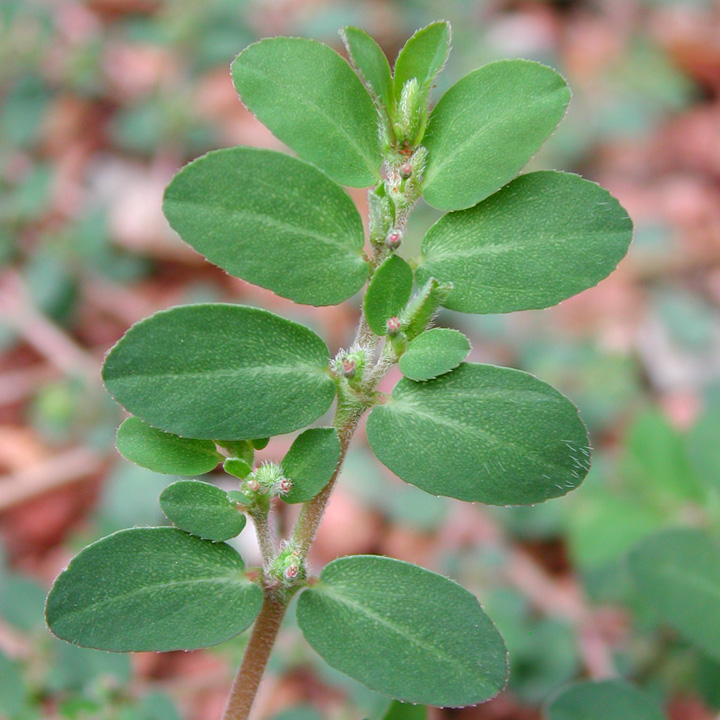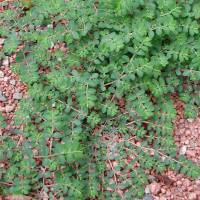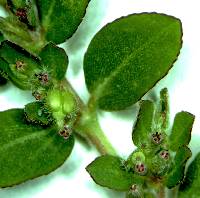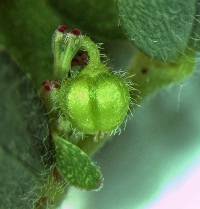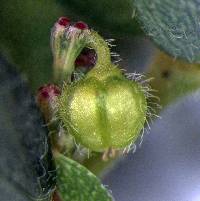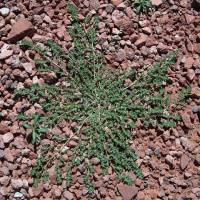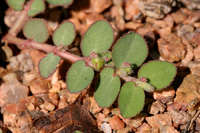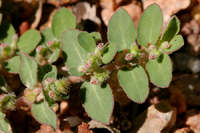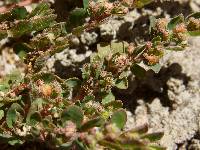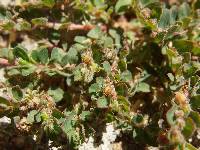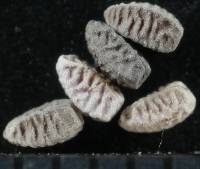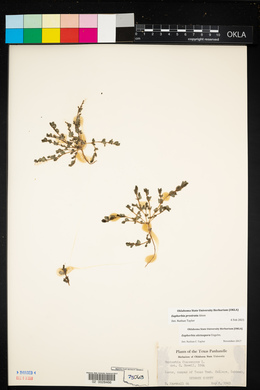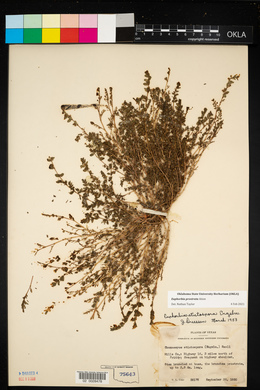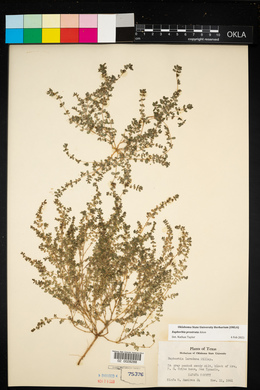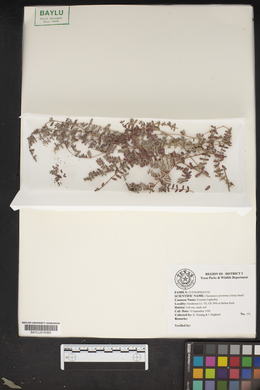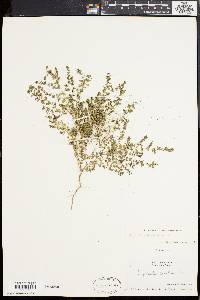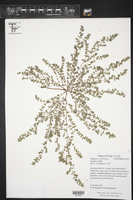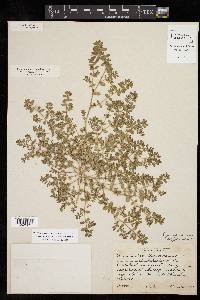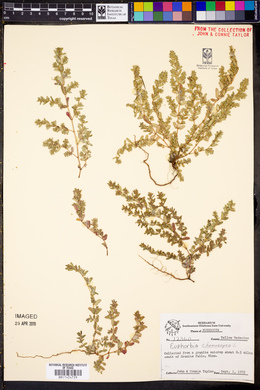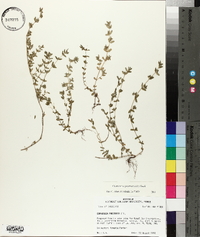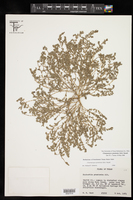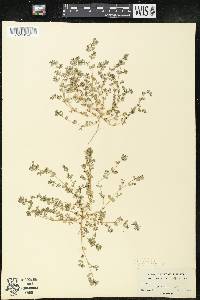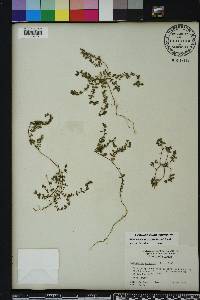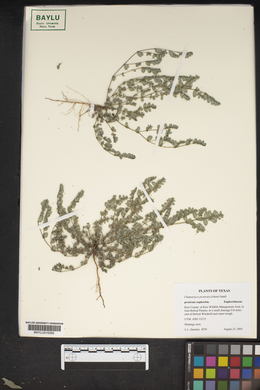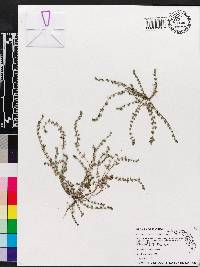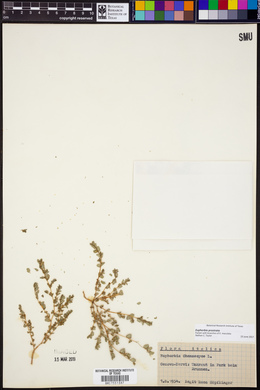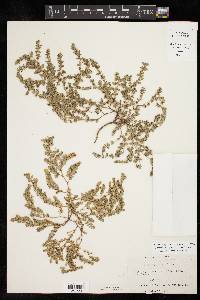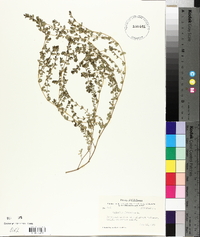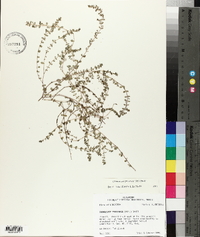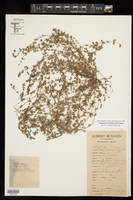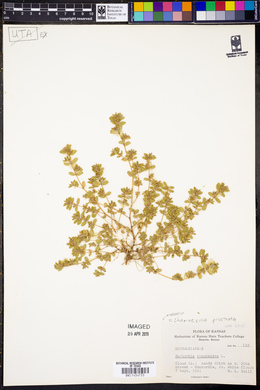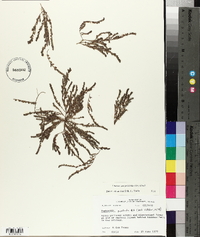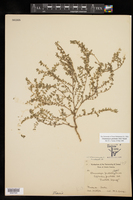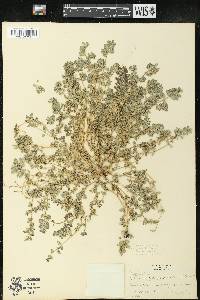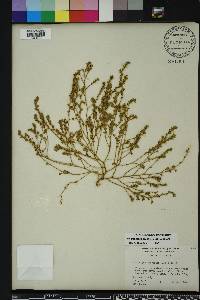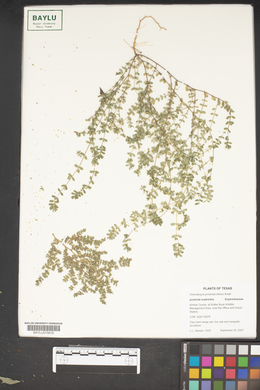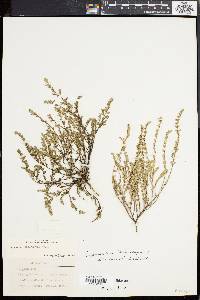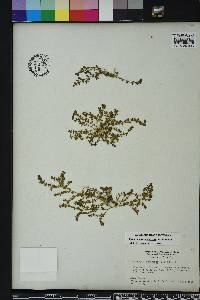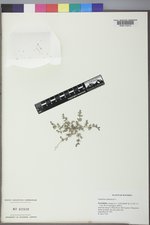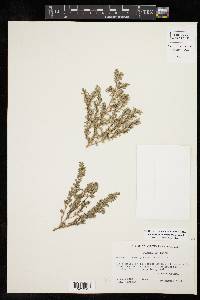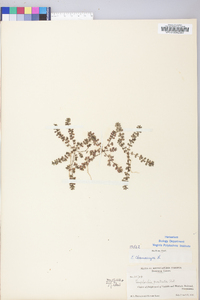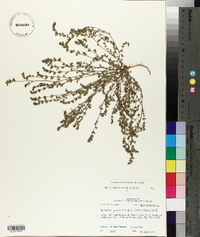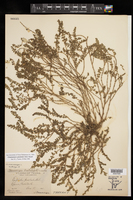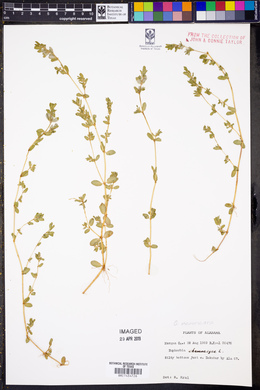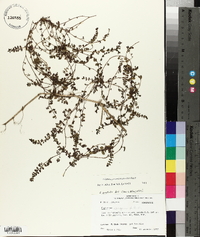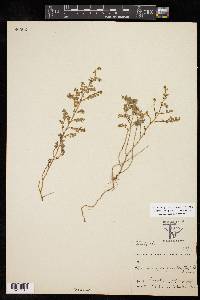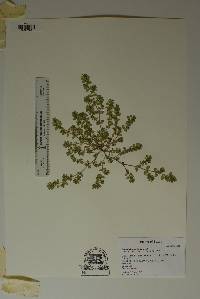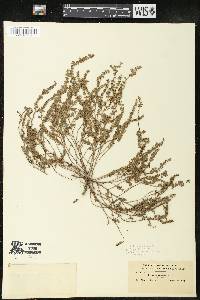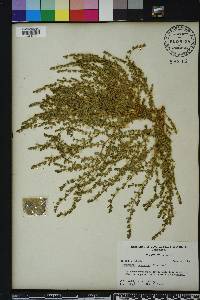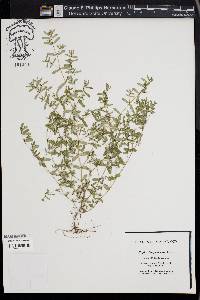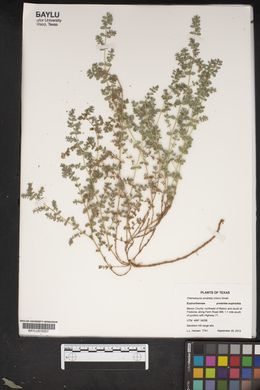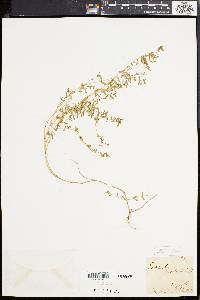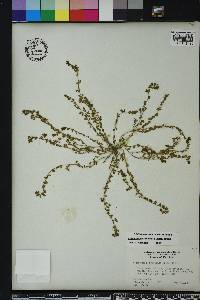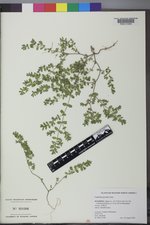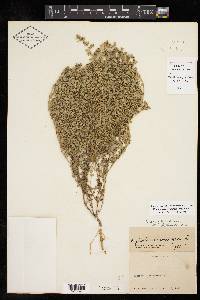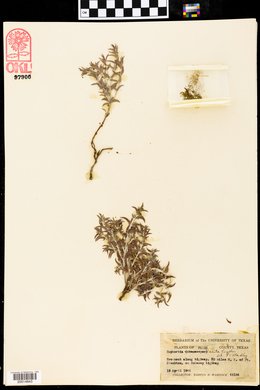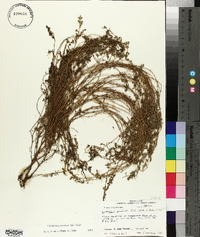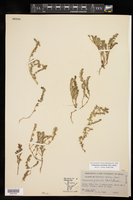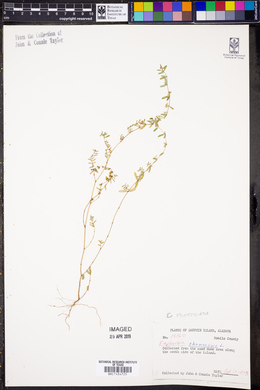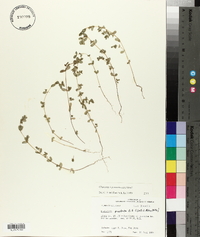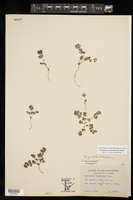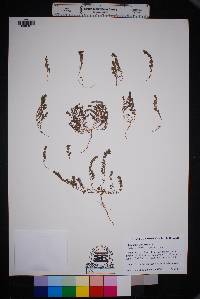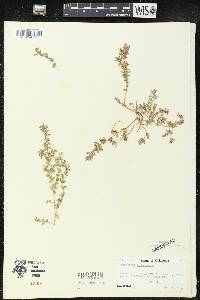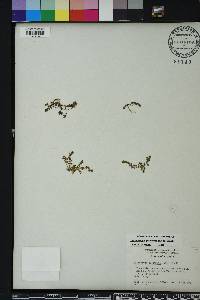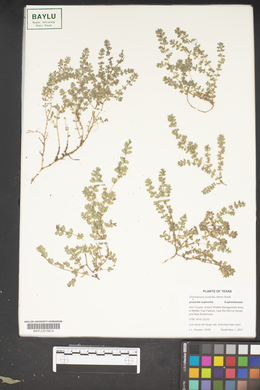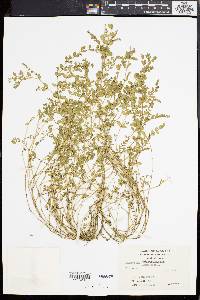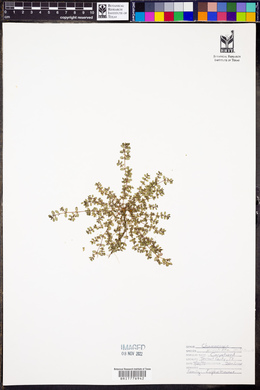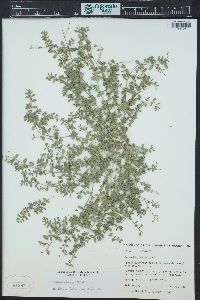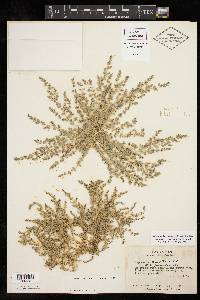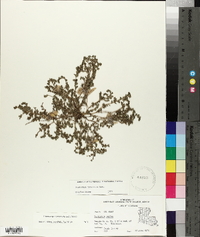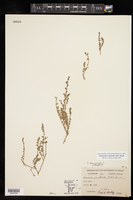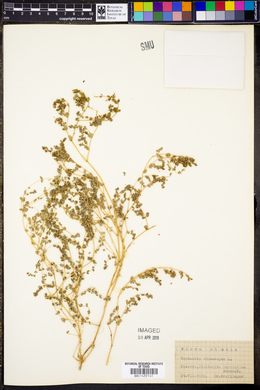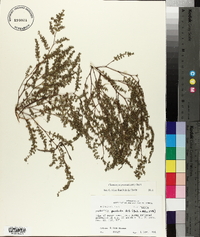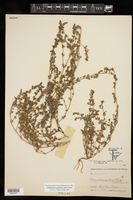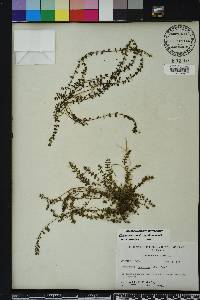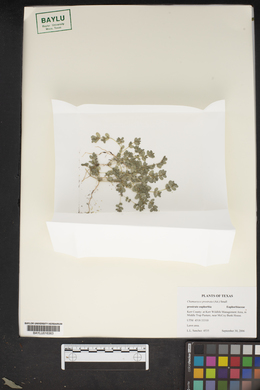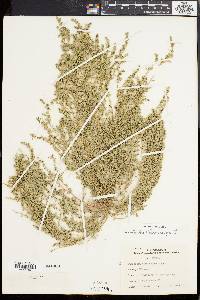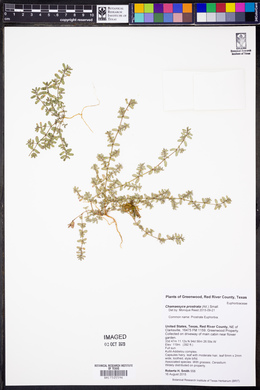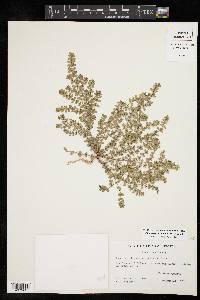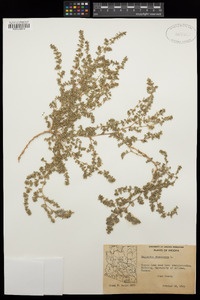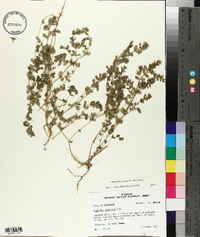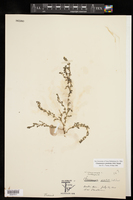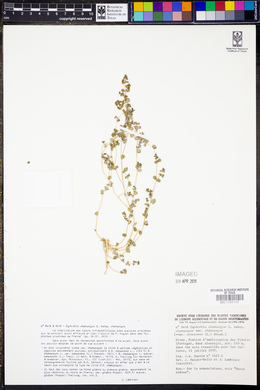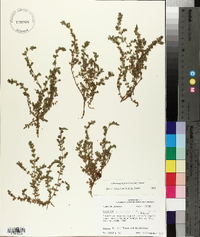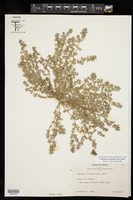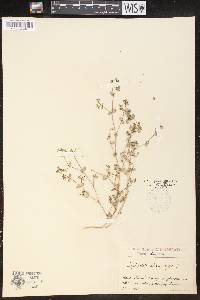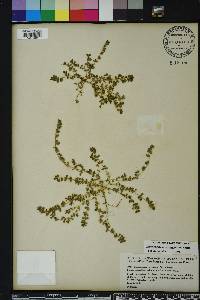Euphorbia prostrata
|
|
|
|
Family: Euphorbiaceae
Prostrate Sandmat, more...groundfig spurge, spurge, prostrate spurge (es: celidonia, golondrina)
[Chamaesyce malaca, moreChamaesyce prostrata (Ait.) Small, Euphorbia callitrichoides , Euphorbia chamaesyce auct. non L., Euphorbia malaca (Small) Little, Euphorbia ramosa var. villosior , Euphorbia tenella] |
Wiggins 1964, Felger 2000, Kearney and Peebles 1969, Correll and Johnston 1970, FNA 2016, Allred and Ivey 2012 Duration: Annual Nativity: Native Lifeform: Forb/Herb General: Annual herb from a taproot; stems prostrate to decumbent, 10-30 cm long; herbage covered with short crinkled hairs (crisped-villous), the lower portions of the stems nearly glabrous. Leaves: Opposite along the stems, on short slender petioles upto 1 mm long; blades obovate-elliptic to oblong, 3-11 mm long and 3-5 mm wide, with a slightly asymmetric base; margin usually obscurely serrate near the leaf tip; upper leaf surface nearly hairless and lower surface usually short-villous. Flowers: Has the highly modified flower structure characteristic of Euphorbias. Structures called cyathia appear to be individual flowers, but are composed of fused-together bracts forming a cup (involucre), with peripheral nectary glands which are often subtended by petal-like bracts called petaloid appendages. Within the cup there is a ring of inconspicuous male flowers, each reduced to a single stamen. Out of the middle protrudes a single, stalked female flower which lacks petals. In E. prostrata, the cyathia (flower structures) are solitary or clustered in leaf axils near branch tips, or on congested axillary branches. Involucres are cone-shaped, less than 1 mm high, and crisped-villous or glabrous, with 4 reddish, oval-shaped glands around the edge, each with a rudamentary white to pink petaloid appendage; 3-6 staminate flowers. Fruits: Capsules broadly ovoid, 3-celled, 1-2 mm long, crisped-villous along the angles and near the base; containing 3 whitish ovoid seeds, 1 mm long, sharply 4-angled in cross section, with several narrow, sharp, slightly irregular, transverse ridges. Ecology: Found in disturbed areas, especially in sandy soil, from 1,500-4,000 ft (457-1219 m); flowers March-October. Distribution: Most of the U.S., except for OR, WA, east to MI; south through S. Amer.; throughout the world on every continent. Notes: This species belongs to the Chamaesyce subgenus of Euphorbia. Some treatments, even recent ones, continue to treat Chamaesyce as a separate genus even though molecular evidence places it within Euphorbia. Chamaesyce spp are distinct based on their leaves which are always opposite and and often have asymmetric bases; cyathia (flower structures) in leaf axils, not at branch tips, and usually with petaloid appendages; and stipules present and not gland-like. E. prostrata is distinguished by being a mostly prostrate annual with spreading or appressed hairs all over; minutely serrate, ovate leaves, 3-11 mm long; few, small cyathia (inflorescences that resemble flowers) grouped between leaves along the stems; reddish glands on the cyathia with petaloid appendages very small to absent; seed pods with spreading, crisped or crinkly hairs mostly bunched along the angles; and sharp ridges across the seeds. Could be confused with C. abramsiana or C. micromera: distinguished by the usually larger, broader leaves (not serrate in micromera), pubescent capsule margins, and smaller seeds with sharper ridges. It is wise to make a collection whenever ID to species is needed, as Chamaesyces are difficult to identify in the field, and multiple species of the genus will commonly grow side-by-side. Ethnobotany: Unknown Etymology: Euphorbia is named for Euphorbus, Greek physician of Juba II, King of Mauretania; prostrata means prostrate, referring to the growth form. Synonyms: Euphorbia chamaesyce, Euphorbia prostrata Editor: SBuckley 2010, FSCoburn 2015, AHazelton 2017 Much like no. 31 [Euphorbia maculata L.], but with the lvs more variable in outline, chiefly less than 1 cm, with the styles bifid to the base or nearly so, and with the sharply quadrangular seeds marked with 3 or 4 conspicuous transverse ridges, is rarely adventive (from s. U.S.) and probably not persistent in our range. (E. chamaesyce, misapplied) Gleason, Henry A. & Cronquist, Arthur J. 1991. Manual of vascular plants of northeastern United States and adjacent Canada. lxxv + 910 pp. ©The New York Botanical Garden. All rights reserved. Used by permission. Plant: Prostrate or erect annual forb to 40 cm; herbage with milky sap Leaves: leaves opposite, inequilateral at base, 5-10 mm long, margins entire INFLORESCENCE: generally on short, lateral branches; involucre < 1.5 mm, obconic, hairy to glabrous; gland < 0.5 mm, oval, appendage = to or wider than gland, entire to scalloped, white Flowers: flowers monoecious borne in cyathia, petaloid appendages minute; Staminate flowers 4, generally in 5 clusters around pistillate flower, each flower a stamen; Pistillate flower: 1, central, stalked; ovary chambers 3, ovule 1 per chamber, styles 3, divided 1/2 length Fruit: capsule, ~1.5 mm long, bearing hairs on external angles, spheric, lobed; Seeds ± 1 mm, ovoid, white to gray with sharp transverse ridges Misc: Waste areas; < 250 m. Notes: 4 staminate flowers and one pistallate flower with in the cyanthia. The cyanthia has four white petoloid appendages each with a gland.Seeds white-gray with transverse ridges. References: Hickman, ed.; The Jepson Manual. A Utah Flora. ASU specimans From Flora of Indiana (1940) by Charles C. Deam Indiana Coefficient of Conservatism: C = null, non-native Wetland Indicator Status: FACU |
|
|
|

